Content
The beneficial properties and contraindications of sea buckthorn leaves are not known to everyone. Everyone knows about the healing power of the berries of this wonderful plant. It is necessary to fill this gap, since in terms of their usefulness the leaves are to some extent not inferior to the fruits, but they have much fewer contraindications.
Beneficial properties of sea buckthorn leaves
The properties of any plant are determined, first of all, by its composition. And sea buckthorn is no exception. Until recently, the chemical composition of leaves was poorly studied. But scientists from America corrected this omission and determined that, in terms of their chemical composition, they are almost richer in minerals and vitamins than fruits.
Chemical composition and value of sea buckthorn leaves
So, the composition of sea buckthorn leaves includes the following vitamins:
- A (or retinol from the group of carotenoids) - has antioxidant properties, has a beneficial effect on vision, and regulates normal metabolism.
- Group B – have a complex beneficial effect on the body.
- C (ascorbic acid content up to 370 mg/%) – is responsible for immunity, treats cold symptoms.
- E (tocopherol) - performs a protective function - fights free radicals.
- H (biotin) – helps in the absorption of protein and carbohydrates in the body. Regulates sugar levels and accelerates the decomposition of fatty acids.
- PP (nicotinamide or nicotinic acid) - normalizes the activity of the hormonal structure and endocrine glands.
As well as such macroelements and microelements as: boron, iron, copper, zinc, calcium, potassium, manganese and others.
In addition to vitamins and minerals, sea buckthorn leaves are rich in:
- tannin (its content reaches 10%) – characterized by anti-inflammatory and astringent properties;
- pectin – lowers cholesterol levels, removes waste and toxins from the body;
- tannins (tannins) – have antiseptic and disinfectant effects;
- serotonin (hypophenine) – normalizes the state of the nervous system; its deficiency can lead to hormonal imbalance;
- triterpene acids - with their help, the process of cell restoration occurs;
- coumarins – prevent the formation of blood clots in blood vessels;
- flavonoids:
- phytoncides.
All these components determine the versatile therapeutic effects of sea buckthorn leaves, the beneficial properties of which are not surprising.
What are the benefits of sea buckthorn leaves?
Sea buckthorn leaves have the following beneficial properties:
- wound-healing - they can be used by directly applying to wounds, like plantain leaves;
- regenerating – restore various cells of the body;
- anti-inflammatory – block and reduce the intensity of inflammatory processes in various organs;
- antiviral;
- increase immunity;
- fight vitamin deficiency;
- biostimulating – prevent and eliminate symptoms of physical fatigue;
- hepatoprotective – protect and restore liver cells;
- antioxidant – promote the removal of toxins from the body;
- fixing - normalize stool;
- astringents;
- glypoglycemic – normalize blood sugar levels;
- antitumor - there is evidence that sea buckthorn leaves can slow down the development of malignant tumors;
- antispasmodic - relieve pain and have a relaxing effect.
It should be noted:
- Sea buckthorn leaves successfully fight against all kinds of colds and respiratory tract diseases.
- They help stabilize blood pressure, strengthening the walls of blood vessels and improving heart function.
- Joint diseases and gout recede under the influence of infusions from sea buckthorn leaves.
- These inconspicuous leaves cope well with diseases of the gastrointestinal tract and diarrhea.
- Taking baths with infusions of sea buckthorn leaves helps in the treatment of skin diseases. Lotions and poultices are also effective.
- Actively used for the treatment of stomatitis and periodontitis.
- Sea buckthorn leaves improve the functioning of the visual organs.
- They are also quite effective against radiation damage.
As you can see, the scope of application of sea buckthorn leaves is quite extensive, and there is practically no ailment that they would not try to cope with.
The use of sea buckthorn leaves in folk medicine
In traditional medicine, sea buckthorn leaves are not yet used to their full potential. Relatively recently, an antiviral drug called Hyporamin was released, which is used to treat influenza and other viral diseases.
But in folk medicine they have been used for a long time and fruitfully. They are mainly used to make infusions, decoctions, teas and tinctures.
Recipes for healing tinctures
A tincture from the leaves is very easy to prepare. Mix 1000 ml of boiling water and 4 tablespoons of dried sea buckthorn leaves. You can also use fresh leaves, but in this case they need to be lightly chopped and take a slightly larger amount - 5 tablespoons. Then the mixture is infused in a warm place under a lid for half an hour to an hour.
Then the mixture is filtered through several layers of gauze or a fabric filter. The resulting infusion is usually taken three times a day, 50 ml. The infusion is not stored for long, about two to four days in a cool and dark place. It is better to prepare a new tincture every day.
It is very effective for diseases associated with metabolism and joint damage: rheumatism, osteochondrosis, gout, salt deposits, as well as diabetes. The infusion can also be used during periods of increasing threat of viral infections.
It is also used externally to take baths for certain dermatological diseases.
Decoction of sea buckthorn leaves
The decoction takes a little longer to prepare, but this process cannot be called complicated at all. Moreover, the decoction surpasses all other drugs in its beneficial properties.In the same way, take 4 tablespoons of dry leaves per 1 liter of boiling water and heat everything over very low heat under a lid or, even better, in a water bath for 15-20 minutes. Then infuse the mixture for another 30-50 minutes, filter and cool. The decoction is also stored for a very short time - a maximum of 5 days.
The decoction is taken as an anti-inflammatory agent for cardiovascular and gastrointestinal diseases, for the treatment and prevention of diabetes mellitus, liver diseases, and arterial hypertension.
In these cases, take the decoction 3-4 times a day, 50-100 ml at a time, for quite a long time. The decoction is also used for gargling for pharyngitis, sore throat and ARVI, and for gargling the mouth for stomatitis, gingivitis and other dental diseases.
Healthy tea from sea buckthorn leaves
Perhaps tea made from sea buckthorn leaves is the most popular. Because it is prepared in the traditional way, and it is usually drunk with the addition of honey, sugar, ginger or lemon.
It is enough to pour one tablespoon of leaves with a glass of boiling water, leave for 10-15 minutes and strain through a strainer. Honey and other ingredients are added to taste.
This drink is an indispensable means of preventing colds and viral diseases. It can also be used to stop the inflammatory process in any part of the body. It is also useful for any type of poisoning.
Drink sea buckthorn tea Can be 2-3 times a day, preferably warm.
Alcohol tincture of leaves
Some healers consider the most useful preparation from sea buckthorn leaves to be an alcohol tincture.In many ways, they are right, since in this case the medicinal properties are preserved for a long time, and there is no need for daily preparation of medicinal preparations. In addition, serotonin, one of the most valuable components of sea buckthorn leaves, dissolves in alcohol much better than in water.
To prepare the tincture, pour 2 tablespoons of dry or 5 tablespoons of fresh leaves with 100 ml of vodka or 40-degree alcohol. Leave for 2 weeks in a dark place to infuse, stirring the contents from time to time. Take the tincture, depending on the severity of the disease, from half to a whole teaspoon at a time, 2-3 times a day. It is acceptable to dilute it in water.
The tincture is used to cure any of the above diseases.
The use of sea buckthorn leaves in cosmetology
Sea buckthorn leaves can be used as an excellent cosmetic product.
For example, they do a great job against hair loss and dandruff. To do this, you need to prepare a decoction of 5-6 tbsp. spoons per liter of water, which is boiled for 10-15 minutes. Cool, strain and rinse your hair with it or rub it into your scalp.
To get rid of blackheads or pimples on the skin of the face, lotions will help. To do this, put an equal amount of sea buckthorn leaves and chamomile flowers into a gauze bag and boil them in boiling water until softened. Cool and apply to sore areas for 15 minutes, covering with a towel. After completing the procedure, wipe your face with a piece of ice from a frozen infusion of sea buckthorn leaves.
If your eyelids are swollen or bags under your eyes appear, then brew 1 tbsp. a spoonful of leaves in a glass of boiling water. Leave until cool, strain.Soak cotton pads in the resulting infusion and apply them to the eyelids and eyes for a while.
To take baths, mix sea buckthorn leaves with other herbs, flowers and twigs: chamomile, sage, oak bark and prepare an infusion. After filtering, it is poured into the prepared bath. Such procedures have a soothing, wound-healing and anti-inflammatory effect.
Harvesting and storing sea buckthorn leaves
Sea buckthorn leaves are relatively rarely found in regular pharmacies, so it makes sense to prepare them yourself. Moreover, this will not be difficult, especially if sea buckthorn is grown on your or a neighboring plot.
When and where to collect sea buckthorn leaves
Leaves should be collected away from highways, high-voltage lines, airports and industrial enterprises.
The most favorable time for collecting leaves is May-June. But it is quite possible to do this in August-September, during the berry harvest.
It is better to choose a day that is not hot and definitely not rainy. It is better not to separate the leaves from the shoots, but to cut them directly with the branches, especially since the branches also have healing properties.
How to properly dry sea buckthorn leaves
Sea buckthorn leaves are usually dried in the attic or in a dryer. In the dryer, you just need to set the desired temperature (no more than 40-45°) and in a few hours they will reach the desired condition.
If you choose the natural method of drying in the shade, then the process can last several days, during which the sea buckthorn leaves, laid out on paper or a towel, must be turned over several times.
If the leaves are dried correctly, they have a greenish tint, bend, break, but hardly crumble.
Terms and conditions of storage of dried sea buckthorn leaves
Store dried sea buckthorn leaves in cardboard boxes or linen bags to ensure ventilation. For them, choose, if possible, places with little humidity and lack of light. The shelf life of plant raw materials on average does not exceed one, maximum two years.
Contraindications for use
The benefits and harms of sea buckthorn leaves are incommensurable. It is very rare, but individual intolerance does occur. Otherwise, all the products described above, without alcohol content, have no contraindications. They can be used during pregnancy, to treat children and various chronic diseases.
Taking the tincture with alcohol is not indicated for pregnant women, breastfeeding women, children under 12 years of age and anyone else suffering from cirrhosis of the liver, hepatitis and many acute diseases.
Conclusion
The beneficial properties and contraindications of sea buckthorn leaves allow you, if desired, to cope with almost any disease without causing harm to the body. Use the recipes described above for the benefit of your own health.

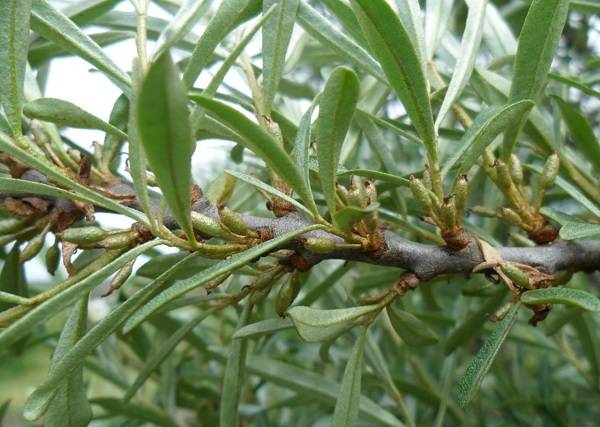


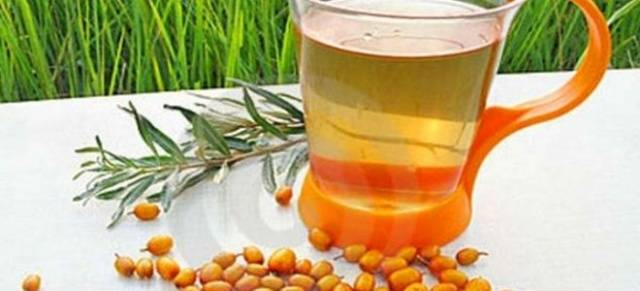
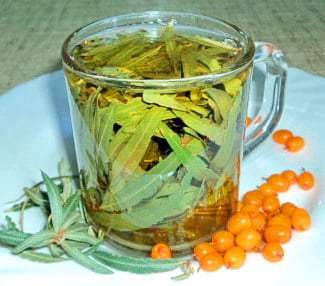
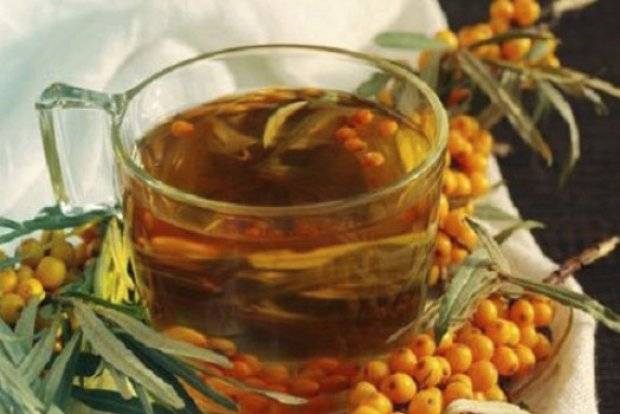
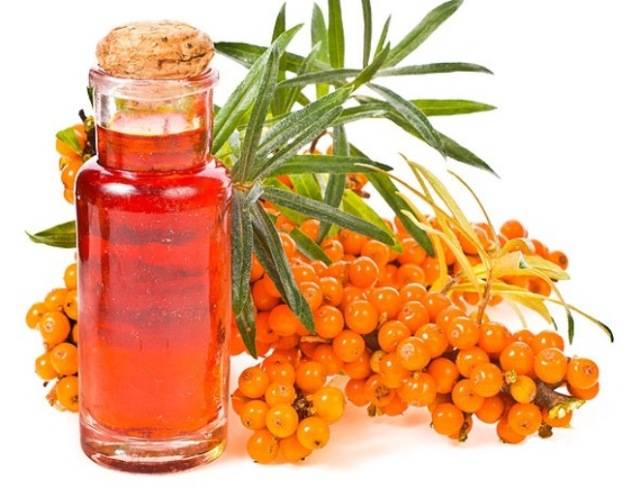
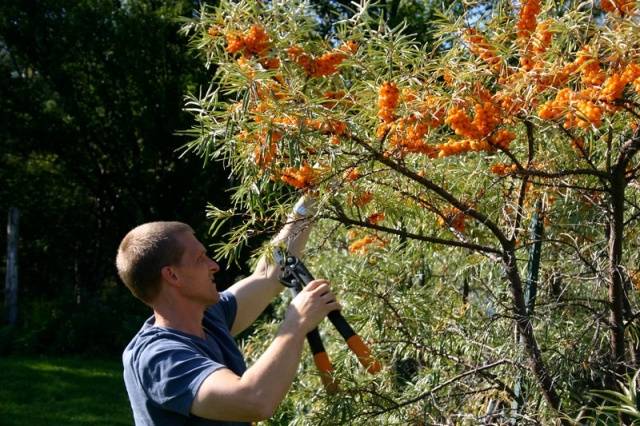
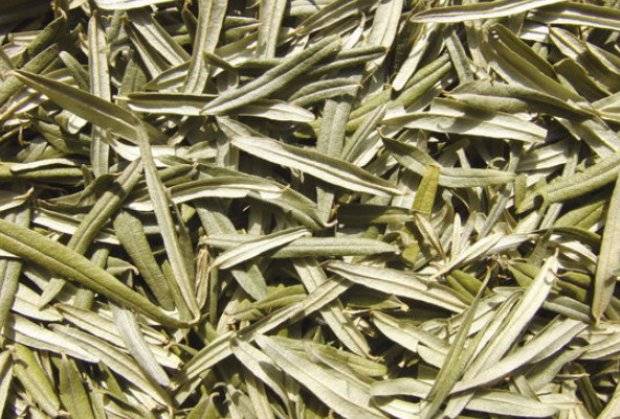
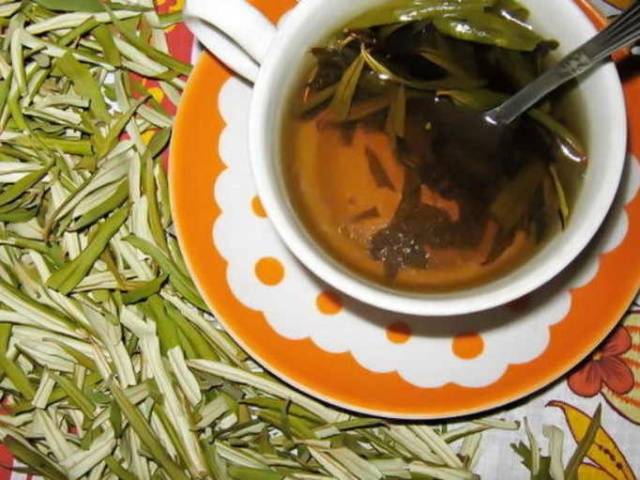




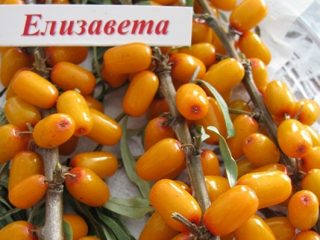

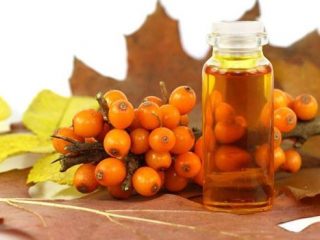
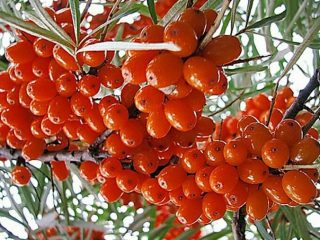

Is it possible to ferment sea buckthorn leaves?
Good afternoon.
Can.